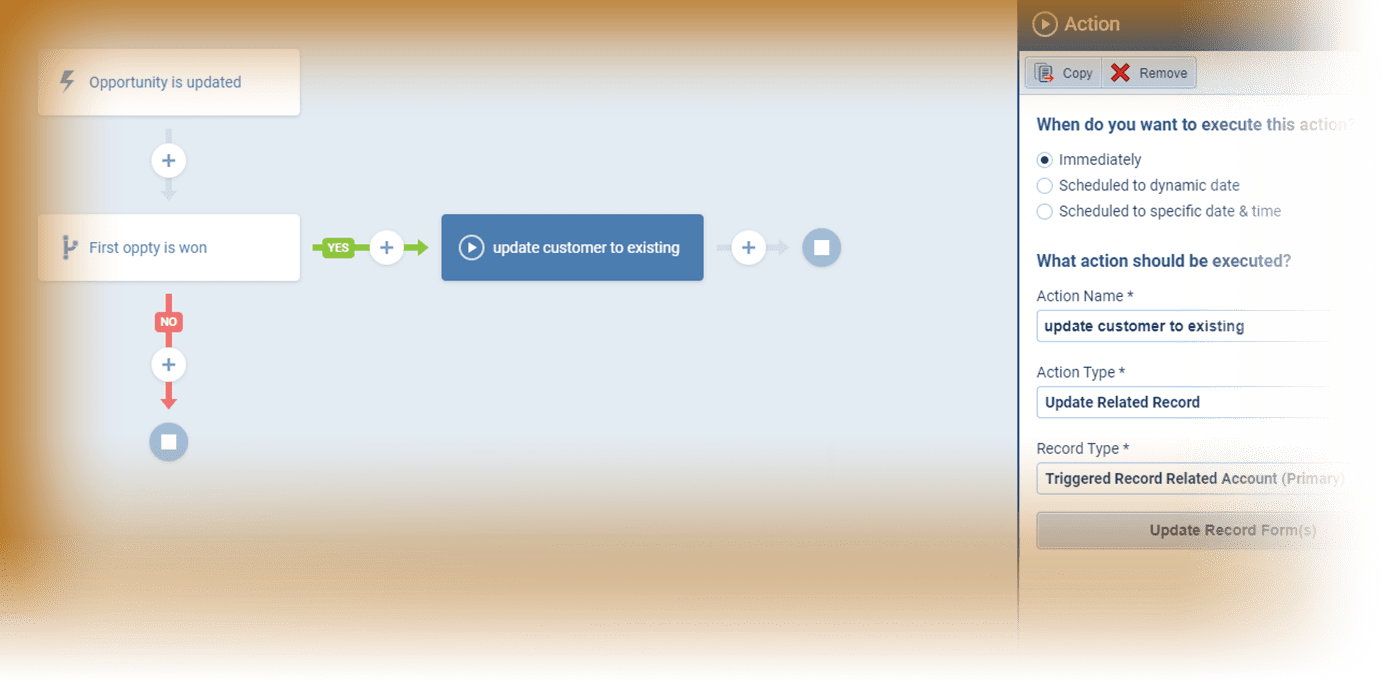AccountAccount Account refers to a record of primary and background information about an individual or corporate customer, including contact data, preferred services, and transactions with your company. Management & Application Integration
Making Technology Work For You!

Application Integration
77% of Global IT leaders say failure to digitally transform will impact revenueRevenue Revenue is the amount of money a business generates during a specific period such as a year or a quarter; also called sales. (Mulesoft Research’s 2021 Connectivity Benchmark Report).
Integration challenges, however, continue to be a roadblock for digital transformation initiatives. The average organizationOrganization Organization is a cohesive group of people working together and formally bound by a shared identity (e.g., one team, company, club, etc.) and a common purpose (e.g., business growth, athletic victory, etc.). runs over 800 apps, each with an approximate lifespan of four years. Less than a third of apps are currently integrated, with many of them existing in silos.
This lack of integration will be unsustainable in the future as organizations strive for increased business efficiency and better-connected experiences.
How does application integration tie into account management?
All departments need to work together to achieve a 360-degree view of the customerCustomer Customer is an individual or an organization that purchases a product or signs up for a service offered by a business.. In order for account management to utilize dataData Data is a set of quantitative and qualitative facts that can be used as reference or inputs for computations, analyses, descriptions, predictions, reasoning and planning. from all of these disparate systems, they all need to be integrated and available in CRM. Otherwise, account management isn’t really possible.
How do we accomplish this?
OpenAPIs › are publicly available application program interfaces and along with the latest in API technology, make it possible for developers to integrate programs with proprietary software applications or web services.
In practical terms, the account manager simply wants the required data right in front of them. When they speak to an account, they need to know, for example, how many support tickets that account has and if any are still open.


Iterate!
Do not try to integrate everything at once!
Release integrations in increments
Use the theory behind Scrum programming such as using sprints & goals
And then continuously tweak & improve
“To earn the respect (and eventually love) of your customers, you first have to respect those customers. That is why Golden Rule behavior is embraced by most of the winning companies.”
 Colleen Barrett, Southwest Airlines President Emerita
Colleen Barrett, Southwest Airlines President Emerita
Automation and Account Management
- Account Management has many moving parts which is why application integration is important
- Automation is also critical to make the customer experience seamless
- It is imperative that the data set flows through any of the customer touchpoints automatically
If a data point changes (e.g. from a sales-related issue to a support issue) automation can make this frictionless customer experience
Bring Value
It is important that you use the data and analyticsAnalytics Analytics is the active study of different types of data with the aim of discovering meaningful patterns and translating these into insight (such as historical analyses and forecasts), or action (such as those intended to improve business performance). to generate insights that can help you bring value to the customer
Sharing your insights and showing them how you can be of even greater help to them is a winning formula

‘Hyperautomation’ is a Gartner-coined term that refers to an effective combination of complementary sets of tools that can integrate functional and process silos to automate and augment business processes. For sales leaders, this means automating sales processSales Process Sales Process is a series of strategic steps or a set of activities aimed at driving sales growth through the alignment of personnel, market insight, methodologies, relevant business units, and technology. steps that were previously very analog. It also means moving more and more customer interactions and transitions into the digital channel that your customers prefer, such as digital commerce.”
 Gartner Group
Gartner GroupAdditional Resources

Precision of Sales AutomationSales Automation Sales Automation is the act, practice or technique of using software to simplify, speed up or streamline the entire sales process or specific component activities such as customer tracking, forecasting, and inventory monitoring. – for a Perfect Data Flow by Nikolaus Kimla
There is a beautiful classical piece of music—Moldau by Czech composer Bedrich Smetana—which describes a spring that begins in the mountains, becomes a brook, a stream, a creek, a river and then reaches the ocean. In the business world, we want a perfect, precise flow of data. It begins with one data point, and moving…

Sales Automation: Back to the General Store by Nikolaus Kimla
“The more things change, the more they remain the same.” —Jean-Baptiste Alphonse Karr Our grandparents often told us that, back in their day, they knew how to get things done, and that today, with all our complexity and complication, we’re seriously lost. Well, that might be true…but in the case of technology, sales automation will…
Sales Automation: In the Direction of Connection by Nikolaus Kimla
There are many things we can say about automation—but probably the most relevant thing is that the goal is interconnection. This means a connection between all sites, companies, and systems where such connection is required and sensible. From the Past Coming out of the past, each individual system has its own peculiarities. That is why, in…
Technology the Sales Enabler by Nikolaus Kimla
In my last article, we talked about the fact that technology, practically since the beginning of time, has been replacing repetitive tasks. While everyone wants some repetitive activity replaced in their lives—actually as much as possible—we’ll stick to our subject of sales and CRM. CRM technology, with increasing intelligence, continues to replace repetitive tasks. Technology…


